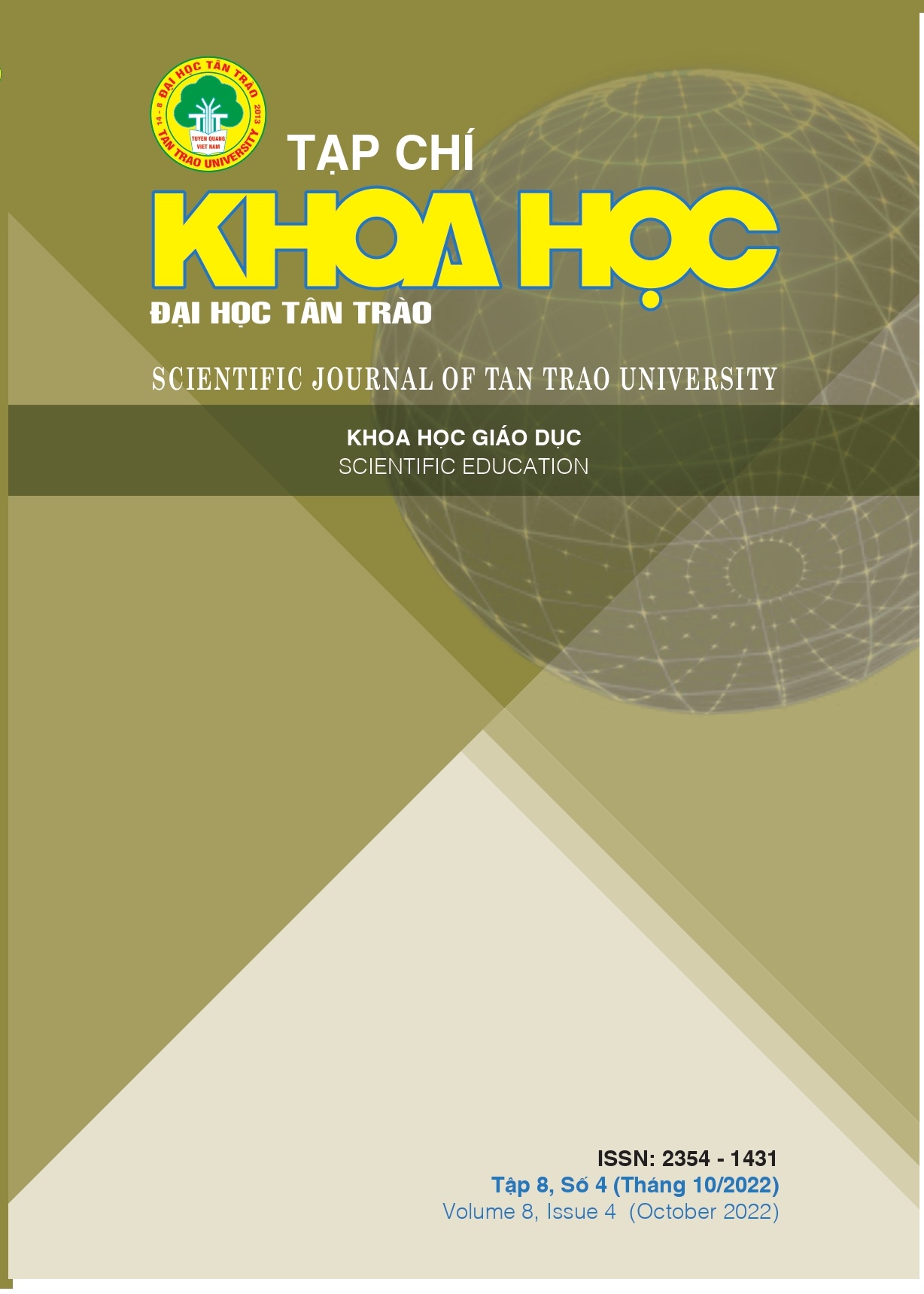REGGIO EMILIA EDUCATIONAL ENVIRONMENT AND ITS APPLICATION IN SOME PRESCHOOLS IN HANOI CITY
DOI:
https://doi.org/10.51453/2354-1431/2022/834Keywords:
Environment, Educational Environment, Education, Reggio EmiliaAbstract
The educational environment is an important condition for the development of children. The educational environment contributes to the cultural identity and the philosophy of the educator creating that environment. Currently, in the world there are many different educational perspectives, with their characteristics, creating a rich and diverse early education with its own identity, Reggio Emilia is a typical example. Based on theoretical and practical research methods (quantitative combined with qualitative), the article presents the viewpoint, educational philosophy, characteristics of the Reggio Emilia educational environment, and the actual situation of applying the Reggio perspective. at some preschools in Hanoi today. Research results show that building an educational environment according to Reggio Emilia will help children to be confident, have a balanced and harmonious development between cognition and emotions, and feelings. However, the application of this concept in preschools in Hanoi is still not good, depending on many factors.
Downloads
References
[1] Ministry of Education and Training, 2018, Guidelines for the organization and use of the educational environment for children in preschool educational institutions (For administrators, preschool teachers), Education Publishing House Vietnamese education.
[2] Proceedings of the International Conference, 2016, Approaching some advanced educational methods in the world, Hanoi Capital University.
[3] Hanoi Department of Education and Training, October 2016, Guidelines for building an educational environment and organizing corner activities in ECE establishments”.
[4] Hoan, V.T. (editor), 2020, Building an educational environment in preschools, National University Publishing
[5] Louise Boyd Cadwell, 2018, Educational Methods Reggio Emilia, Labor Publishing House and Thai Ha Book Joint Stock Company.
Downloads
Published
How to Cite
Issue
Section
License

This work is licensed under a Creative Commons Attribution-ShareAlike 4.0 International License.
All articles published in SJTTU are licensed under a Creative Commons Attribution-ShareAlike 4.0 International (CC BY-SA) license. This means anyone is free to copy, transform, or redistribute articles for any lawful purpose in any medium, provided they give appropriate attribution to the original author(s) and SJTTU, link to the license, indicate if changes were made, and redistribute any derivative work under the same license.
Copyright on articles is retained by the respective author(s), without restrictions. A non-exclusive license is granted to SJTTU to publish the article and identify itself as its original publisher, along with the commercial right to include the article in a hardcopy issue for sale to libraries and individuals.
Although the conditions of the CC BY-SA license don't apply to authors (as the copyright holder of your article, you have no restrictions on your rights), by submitting to SJTTU, authors recognize the rights of readers, and must grant any third party the right to use their article to the extent provided by the license.


